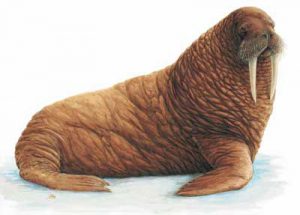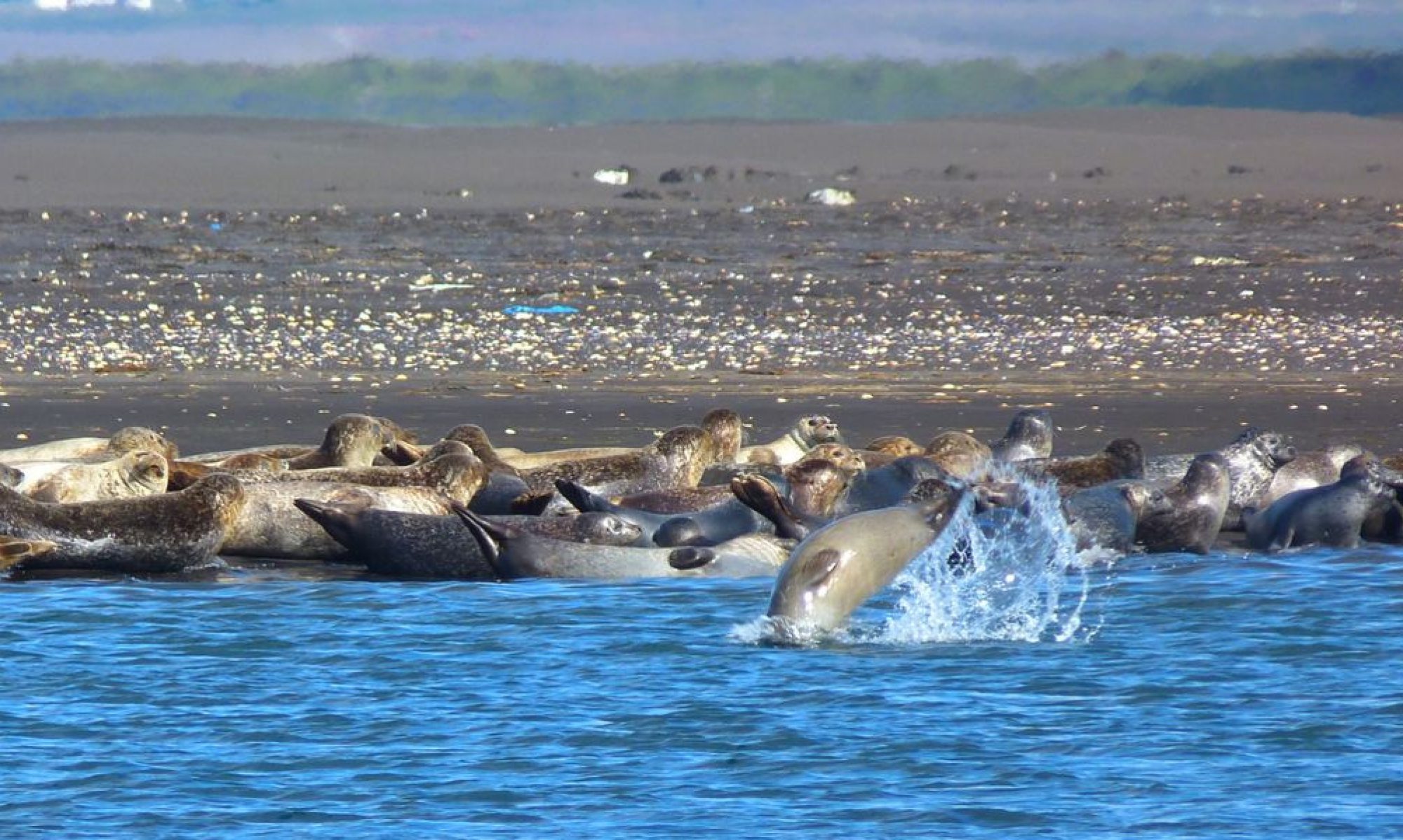
Walrus (Odobenus rosmarus)
Walruses live in the Arctic Ocean where they haul out on coastlines and large drifting ice sheets, but not on pack ice. Walruses are enormous animals; males can be 3,5 m long and weigh more then 1,6 tons. At birth, the pups are around 140 cm long and weigh 60 kg. Their main characteristics are brown, wrinkled skin, coarse, short hair and enormous tusks. These tusks grow throughout their lives, reaching 1 meter in length and weighing around 6 kg. The walrus uses them mainly for social purposes, such as revealing status, and as weapons when needed.
The walrus’ diet is primarily invertebrates like shellfish, echinoderms (sea stars and urchins) and crabs, but males have been known to attack small seals.
There are two separate stocks: the Atlantic walrus and the Pacific walrus. The Atlantic stock is found around East and West Greenland, East Canada, Svalbard, Franz Josephs Land and the Barents and Kara Seas. The Pacific stock is found in the Bering and Tsjukot Seas and around Wrangel Island.
The Atlantic stock is estimated at around 30.000 animals and the Pacific stock between 200.000 – 250.000 animals. In the past, the walrus was hunted all around the North Pole, but in 1952 it was protected, though aboriginals are still allowed to hunt them in small numbers for subsistence.
Walruses are very rare around Iceland, although bones and other remains found along the west coast suggest that walruses lived there at some time. A walrus was last seen in Álftafjörður (East Fjords – near Djúpivogur) on July 31, 2018. The last one before that was seen in Ófeigsfjörður (West Fjords – Strandir area) in July 2008.

